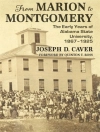An examination of women entrepreneurs who invested in, and often managed, non-feminine businesses such as shipping and shipbuilding in the late eighteenth and nineteenth centuries.
Far from the genteel notion of Victorian women as milliners and haberdashers, this book shows that women could and did manage male businesses and manage men. Women invested in the expanding shipping industry throughout the late eighteenth and the nineteenth century and actively ran non feminine businesses such as shipbuilding. By setting the businesswomen firmly in the context of the industry, the book examines the business challenges from the woman’s perspective. It demonstrates how a woman needed to understand the business requirements while in some cases also being a single parent. As business managers, they had to manage a male workforce, deal with large and important customersand ensure they maintained their firm’s reputation and continued to win orders. Nor were these women mere caretakers for the next generation, in many cases continuing to run the business in an active manner after their son or sons were of age. This book reveals communities of independent women in England who were active entrepreneurs and investors, in a period when women were increasingly supposed to be relegated to a more domestic role. It includes briefbiographies of many of these women entrepreneurs who were also conventional mothers, wives and daughters. Helen Doe is an Honorary Fellow of the Centre for Maritime Historical Studies, University of Exeter; a Council Member ofthe Society for Nautical Research; chair of their marketing committee; a member of the British Commission for Maritime History; on the Advisory Council of the SS Great Britain; and a Trustee of the National Maritime Museum Cornwall.
Spis treści
Introduction
The Legal, Financial and Cultural Environment
Maritime Communities
Five Investor Ports
Shipowning Wives, Widows and Spinsters
Active and Passive Female Shipowners
Managing Owners
Port Businesswomen
Warship Builders
Merchant Shipbuilders
Conclusion: 'A Respectable and Desirable Thing’












